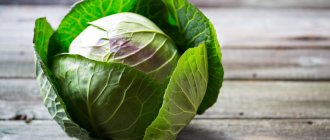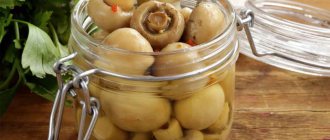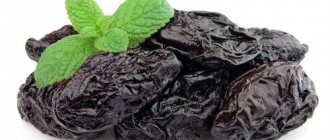In summer, zucchini (previously spelled “zucchini”) are rightfully considered an indispensable vegetable in the diet of both adults and children. Therefore, it is not surprising that many people think about how to store zucchini. In this article we will tell you what methods exist for storing this unique summer vegetable.
To enjoy the taste of fresh zucchini all year round, you need to know how to store them correctly (up to 6-7 months)
When to remove zucchini from the garden for storage
Zucchini for winter storage is harvested in the fall before frost sets in, since frozen fruits will not last long. Damaged, diseased and overripe vegetables are also not suitable for storage, so do not keep them in the garden for longer than expected.
For preparing salads and stewing, you can collect slightly unripe zucchini (15-25 cm long). They have a soft skin and few small seeds inside. But such vegetables are not suitable for long-term storage. Only ripened fruits with thicker and harder skin and a color characteristic of the variety are collected. When lightly tapping the fruit, a dull sound should be heard.
The first harvest of zucchini is harvested approximately 15-20 days after the end of flowering, but such vegetables do not last long. Zucchini for storage is removed from the garden in the fall
Please note: unripe zucchini will last longer than overripe zucchini. Therefore, if you cannot collect them on time, it is better to cut a little in advance, when they still have soft stalks.
Storage conditions
Regardless of the method chosen, zucchini must be stored under the following conditions:
- darkness and coolness;
- optimal temperature is 0-10 degrees, temperatures up to 20-22 degrees are allowed;
- humidity level – up to 75%;
- the fruits should not come into contact with each other - the shelf life will be higher, the risk of spreading diseases and spoilage will be reduced;
- You cannot pack zucchini in film or plastic bags;
- there should be no heat sources nearby.
During long-term storage of zucchini, regular inspection is required. At the first signs of rotting, all damaged specimens must be disposed of immediately. The place where they lay should be disinfected.
How to collect zucchini for storage
Using a sharp knife or pruning shears, carefully cut the stem. Do not pull, twist or break off the fruits with your hands, especially if they are already fully ripe and difficult to separate from the vines. In this case, the stalks should be as long as possible (at least 5 cm), with an even cut. If the tails separate and begin to rot, the fruit will quickly deteriorate.
- Dangerous diseases of pumpkins and zucchini during storage
These pumpkin and squash diseases can slowly destroy your entire crop.
Rules for harvesting vegetables
To prepare zucchini for the winter, you first need to properly harvest them. This will determine how long they will stay in storage.
Collection time for each region is individual. The main thing is to collect the fruits before they fall under the first autumn frosts. But there’s no need to rush into planting – haste will reduce the time you can use zucchini in winter.
To obtain young fruits, zucchini is cut every 2-3 days so as not to interfere with the ripening of the rest. To store them for winter storage, on the contrary, they wait until they are completely ripe, and the new ovaries are torn off.
Harvest in dry weather when nighttime temperatures approach freezing. To keep zucchini fresh in winter, separate them from the vine, leaving a stalk 5 cm long. Use a sharp knife to make a clean and even cut.
Tip of the day
Do not twist the zucchini. An uneven, torn surface of the stalk causes the formation of rot and premature spoilage of the product.
Damaged, diseased and deformed fruits are not suitable for storage. Set them aside immediately and recycle them.
Dry the zucchini selected for storage thoroughly. To do this, leave the fruits under a canopy for 1-2 days. During this time, the cut on the stalk will dry out and become hard, and the juice will no longer be released.
Tip of the day
Do not wash vegetables before storing. Just carefully remove any dried soil from the fruit, being careful not to damage the skin.
Where and how to properly store zucchini
Before storing zucchini, they must be thoroughly cleaned of soil, wiped with a dry cloth and dried in the sun during the day. Under no circumstances should fruits be washed!
Zucchini usually begins to rot from the tail. To prevent the development of rot, before storing, the stalk should be dipped in molten paraffin for a few seconds.
In order for the fruits to remain fresh as long as possible, it is necessary to comply with the storage conditions for zucchini. Vegetables should be kept in a dry, dark and relatively cool ventilated area. It is advisable that they are located one by one (not touching each other). They can be placed in boxes, the bottom of which is lined with straw or pine sawdust. Or hang them in separate nets.
How to store zucchini in an apartment
At home, zucchini can be stored in the pantry, under the bed or near the door that leads to the balcony. The main thing is that it is dry and dark enough. At the same time, heating devices should not be located near such a storage facility.
It is not recommended to store zucchini on a balcony or loggia: they will freeze there
When storing zucchini in an apartment, it is best to pack each fruit in paper and place it in one layer in a wooden box or cardboard box. If you've managed to harvest a bumper crop, it can be a bit of a hassle to wrap paper around every vegetable. In such a situation, you can simply place cardboard partitions between the fruits.
Storing zucchini in the refrigerator and freezer
A small amount of the harvest can be stored in the refrigerator - in the vegetable compartment. In this case, whole and dried zucchini should be packed in plastic bags, tied and several holes made for ventilation.
Zucchini is stored in the freezer in the form in which it will be eaten. For example, if you plan to cook vegetable stew in winter, cut the fruits into cubes, and store the zucchini for frying in slices 8-10 mm thick.
Large circles of zucchini can be cut in half
Then place the zucchini on a tray and put it in the freezer for several hours. Then remove the frozen slices, put them in bags and return them to the freezer.
How to store zucchini for the winter in the cellar
In the cellar or basement in which zucchini is stored, the air temperature should be from 4 to 10 ° C, and the humidity should be about 80%. If the storage is too damp, putrefactive bacteria will multiply in the fruits. Therefore, do not forget to regularly ventilate the room. Also, hang a thermometer to monitor the temperature.
Zucchini can be stored on shelves lined with straw. The fruits are placed in rows so that they do not touch each other. If the size of the cellar does not allow you to fit the entire harvest, place one vegetable at a time in a nylon stocking and hang it from the ceiling.
Fruit selection
Before storing, you need to select the right fruits. If you have your own summer cottage, you should choose the right type of zucchini for planting .
Experienced summer residents advise storing zucchini with white skin (for example, fruits of the following varieties: “Belogor”, “Beloplodnye”, “Gribovsky 37” - the oldest and still one of the best, “Anchor”, “Sosnovsky”, “Rolik” ). By winter, their skin becomes thick and impenetrable (this happens with all pumpkins), they store well, no worse than zucchini.
At the same time, it is recommended to store not classic zucchini, but zucchini - it is widely believed that they retain their original qualities much better due to the structure of the fruit.
For long-term storage, it is better to choose zucchini or white-fruited squash.
If possible, it is better to store the fruits immediately after picking them from the bush. First of all, put overripe specimens aside - they will not last long. You should choose medium-sized, ripe vegetables . If you buy zucchini at the market and cannot determine how ripe they are, do a little test: try piercing the skin with your fingernail. If this is very difficult or impossible to do, then the fruit is suitable for storage.
For long-term storage, choose fruits that are fully ripe, but not overripe.
Pay attention to the condition of the fruit's surface. You can keep zucchini fresh for a long time only if there are no damages or flaws on them. The slightest scratch on the skin will lead to rot, which will quickly spread to the entire batch of vegetables. zucchini with stalks for storage .
Before storing vegetables, it is recommended to carefully clean them from the soil and dry them a little in the sun (do not wash them). After this manipulation, the peel will become harder, which will significantly extend the shelf life of the vegetable.
Before storing zucchini, you cannot wash it; just wipe it with a dry cloth.
Zucchini varieties for long-term storage in winter
Thin-skinned zucchini does not store well, even if you create ideal conditions for it. Therefore, if you want to eat vegetables from your garden until spring, give preference to large fruits (30-45 cm long) with thick skin and a small amount of seeds.
These characteristics are endowed with zucchini varieties Festival, Gribovsky, Zolotoy Cup, Aeronaut, Arlika, Assete F1, Aral F1, Zheltoplodny. Kuand, Marquise, Diamond, Gray, Tristan.
If the zucchini has not reached the desired size, do not store it, but use it in the fall to prepare delicious dishes
General rules
How to keep zucchini fresh for the winter? When growing a crop and its subsequent storage, everything plays an important role, starting from the choice of the variety of vegetables that are intended for storage. Zucchini of mid-late and late varieties are most effectively preserved.
Varieties show the best performance:
- Festival;
- Golden Cup;
- Gribovsky;
- Arlica;
- Asset;
- Aeronaut;
- Yellow-fruited.
Zucchini are well adapted to long-term storage - with proper storage, some varieties can be preserved until a new harvest.
Zucchini varieties that are best suited for storage:
- Golden;
- Little Gypsy;
- Black handsome;
- Bumblebee;
- Zebra;
- Multi-storey;
- Skvorushka.
Zucchini should not be kept in storage longer than February - they lose their consumer qualities, which excludes the advisability of their further storage.
It is better to process the vegetables by peeling them and removing the seeds, which during this storage period can add bitterness to the zucchini. After this, you can freeze the zucchini at home by placing them in portioned bags.
Preparation
The skin of zucchini suitable for long-term storage must be thick and dense to protect the fruit from rotting. There should be no damage to the surface of the peel. Scratched zucchini is best eaten immediately after harvest.
You need to collect vegetables from the garden along with the stalk, cut it to 6-9 cm. It protects against putrefactive processes and drying out of the pulp. The quality of the fruit is determined by the condition of the stem. If it is dense, the zucchini can still be stored. Fruits with soft stems will not last long and should be eaten immediately.
Fruits selected for stock are prohibited from washing. They are wiped with a dry cloth to remove the soil and dry from moisture. The fruits are placed vertically in a regular wooden box, legs up, in one or several layers. Clean sheets of cardboard are placed in the spaces between the rows.
Store zucchini
How long can zucchini with thin skin be stored - 2 weeks in the refrigerator, but even this does not stop connoisseurs from growing them. The pulp is tasty. They make delicious pancakes and casseroles. They do not last long due to their thin skin. They can only be frozen.
Zebra, Tsukesha, Genovese, Bumblebee - zucchini varieties that have thicker skins and can be stored in the basement
Harvesting and preparation for storage
Zucchini will be stored for a long time at home if collected in time and properly prepared. To do this, the following conditions must be met:
- Harvest before frost. Frozen fruits will soon begin to rot.
- Choose only whole and ripe vegetables. They must have a color characteristic of the variety. Soft specimens and those with scratches, dents, etc. on the skin are rejected. The skin must be intact. Overgrown fruits will not be stored for long. Therefore, do not delay cleaning.
- Cut ripe zucchini with a soft stalk. To cut, use a sharp pruner or knife, leaving a tail about five centimeters long. If you tear off the fruit, the stalk will rupture and soon begin to rot. Therefore, if it was not possible to cut it during harvesting, make an even cut later.
- Dry the crop in the sun, for which cutting is carried out in sunny weather. There is no need to wash the vegetables, but you can wipe them off the ground with a dry cloth. If it rains, you can dry it in the room. The main thing is to store the zucchini dry in winter.
Vegetables that have not yet ripened are eaten first.
Some tips
How to keep zucchini fresh for the winter without them spoiling? The following tips will help:
- Shelves for zucchini are lined with straw or another similar option. To save space, you can use nylon tights or stockings, hanging them on the ceiling. Vegetables will remain in good shape for about 3 months.
- You can make cardboard dividers in the box so that the zucchini does not touch.
- At home, zucchini can simply be placed on the floor on a bed of straw. It’s convenient to put them under the bed so that they don’t get in the way.
If you use these tips, your vegetables will be preserved until spring. And at the same time they will remain tasty and fresh, making you happy on winter days.
Optimal conditions for preserving fresh vegetables
It is recommended that you familiarize yourself in advance with how to properly store young squash fruits at home.
Temperature
First you need to decide on the optimal storage temperature for the harvested crop. Some people claim that they last a long time at room temperature, but this is not true. Zucchini lasts the longest in rooms with a temperature of about 5-10 degrees Celsius. Therefore, you cannot leave vegetables in the apartment for a long time, as due to the high temperature they will begin to deteriorate.
Also, the storage duration decreases in low temperature conditions. If the temperature is less than 3-4 degrees Celsius, the zucchini will quickly rot.
Required air humidity
Another indicator that needs to be monitored periodically is the level of humidity in the room. Many gardeners transfer it to the cellar in the summer after harvesting. However, this room is not always suitable for harvested fruits due to dampness. Air humidity should not exceed 65-70%. Only in such conditions will the squash fruits not spoil for longer than six months.
In a damp basement or cellar, storage time is reduced by 1-2 months.
In the apartment
Place the fruits, dried and cleared of dirt, in a pantry, niche or under the bed. Do not place them close to a radiator, heaters or stove. Monitor the air humidity, it should not exceed 80%, otherwise the zucchini will begin to rot soon. To keep vegetables in your apartment for as long as possible, wrap each of them in paper. Choose a place that is not exposed to direct sunlight.
Read also: Basic rules for storing pumpkin
How to preserve watermelon until spring?
What is the best way to clean floors at home?











